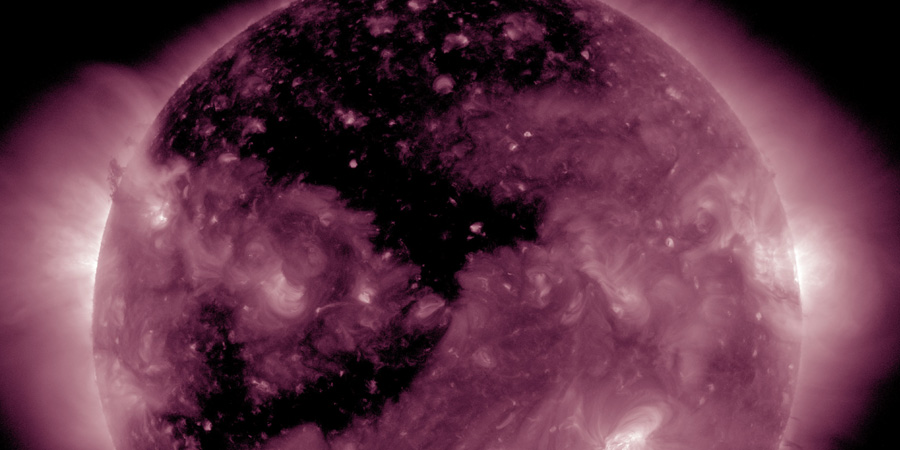Massive coronal hole faces Earth
Monday, 26 September 2016 10:14 UTC

She's back! That massive coronal hole system that faced us four weeks ago is back and it survived its trip around the farside of our star. This truly gigantic coronal hole managed to cause geomagnetic storming conditions on five consecutive days during the first five days of this month. Fantastic auroral displays were reported from all around the world.
But there is more! We actually believe that this coronal hole became bigger during the past few weeks. Compared to the last rotation, the extension that crosses the equator onto the southern hemisphere does seem to have grown in size.
A coronal hole is facing Earth. Enhanced solar wind could arrive in ~3 days - Follow live on https://t.co/T1Jkf6i4Cb pic.twitter.com/UtpZwcIYIv
— SpaceWeatherLive (@_SpaceWeather_) 26 september 2016
We already reached minor G1 geomagnetic storm conditions yesterday (reported by the NOAA SWPC) which was likely caused by a much smaller coronal hole that faced us a few days ago. The solar wind and IMF conditions have subsided a bit this morning but starting tomorrow, we should start to feel the influence of this enormous coronal hole system. Another period like we had during the beginning of this month where reach geomagnetic storming conditions on multiple days is not out of the question. The NOAA SWPC expects storming up to the moderate G2 geomagnetic storm level on 28 September, which is not unthinkable considering the activity that we saw earlier this month.
High latitude sky watchers and with a bit of luck even those on middle latitude locations should for sure be alert. We are likely in for an interesting period with some nice auroral displays! Be sure to share your images and videos on our forum. Enjoy the hunt!
Not sure what all of this means? What a coronal hole is and why it causes aurora here on Earth? Go visit our help section and read all about it. Still puzzled? Than head over to our community forum and ask us a question!
Thank you for reading this article! Did you have any trouble with the technical terms used in this article? Our help section is the place to be where you can find in-depth articles, a FAQ and a list with common abbreviations. Still puzzled? Just post on our forum where we will help you the best we can!
Latest news
Latest forum messages
Support SpaceWeatherLive.com!
A lot of people come to SpaceWeatherLive to follow the Solar activity or if there is a chance to see the aurora, but with more traffic comes higher costs to keep the servers online. If you like SpaceWeatherLive and want to support the project you can choose a subscription for an ad-free site or consider a donation. With your help we can keep SpaceWeatherLive online!
Space weather facts
| Last X-flare | 2025/12/08 | X1.1 |
| Last M-flare | 2025/12/21 | M1.3 |
| Last geomagnetic storm | 2025/12/21 | Kp5 (G1) |
| Spotless days | |
|---|---|
| Last spotless day | 2022/06/08 |
| Monthly mean Sunspot Number | |
|---|---|
| November 2025 | 91.8 -22.8 |
| December 2025 | 116.9 +25.1 |
| Last 30 days | 109 +22.2 |





